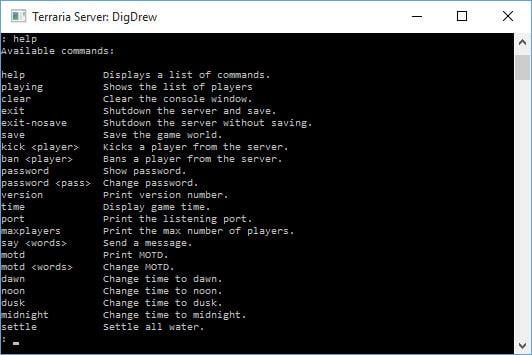Terraria‘s fourth major content update, Journey’s End, is here. Fit with new bosses, a balance overhaul, graphical improvements, and over 1,000 new items, Journey’s End feels like Terraria 2. One thing that, thankfully, hasn’t changed is multiplayer. Even with the new additions, Journey’s End is a multiplayer game at its core, and the best way to play with your friends is through a dedicated server. Here’s how to set up a dedicated Terraria server, even if you know nothing about networking.
Further reading
- Terraria review
- The best games like Minecraft
- The best simulator games
Setting up the server
Before diving in, here are a few notes. We’re going to show you how to set up a dedicated Terraria server without a configuration file. Terraria has a server setup wizard, which makes the process dead simple. Additionally, if you want others to access your server from external networks, you’ll need to set a static IP for your router and forward a few ports. This varies wildly from router to router, but we have a few helpful resources at the end of this section. When choosing Terraria server hosting and setting it up it might seem a bit tricky at first, but once you’ve done it once you can do it again easily.
First, you’ll want to navigate to your Terraria install folder. If you’re running the game through Steam, the default installation location should be C:Program Files (x86)SteamsteamappscommonTerraria. Once there, open TerrariaServer.exe to launch the server config window and bring up a list of all available worlds. You can find the same executable in C:GOG GalaxyGamesTerraria if you purchased the game through GOG.
Tip: Create a shortcut to TerrariaServer.exe on your desktop for easy access.
Each world is stored locally on your computer’s hard drive. If you have not created a world yet or wish to start a new one, type “n” into the command line and hit Enter to create it. You will then get a prompt to set the world size (1 = small, 2 = medium, and 3 = large) and name it. The world will generate after completing the aforementioned steps, and once done, you will be able to select it as the server’s dedicated world.
To select a world for the server, type in the corresponding number in the Chosen World field. Afterward, you can make the following configurations:
- Set the maximum number of players. The default is eight, but you may specify a number other than that as the server cap.
- Set the port. Unless you’re running multiple servers and need to set a different port, you can just hit Enter to use the default, which is 7777.
- Enable port forwarding. Type “y” to enable port forwarding or “n” if you do not wish to use it.
- Set your password. If you want to set a password for your server, type it in the field directly right of Password, then hit Enter. Doing so without typing anything will mean there is no password for the server.
After this, the world will be set and playable for all those who connect to the server. If you wish to change the settings for the world, you can do so from within the server console window. Changes can be made on the fly, too, even while you’re playing. This allows you to implement changes in your Terraria world in real time. You can make the following configurations to your server:
If you’re planning on playing with others who are not connected to the same LAN/router as the host computer, you will need a static IP address and port forwarding for your Terraria server so others can access it. We have a guide on how to change your IP address, as well as how to port forward, if you’re unfamiliar. Port Forward also offers detailed instructions for specific routers, broken down by make and model.
Connecting to the server
Once you’ve got a server up and running, the next obvious step is to connect to it.
To connect to the server from the same computer on which it’s hosted:
Step 1: Launch Terraria as you would normally.
Step 2: Select Multiplayer > Join via IP.
Step 3: Select the character you wish to use.
Step 4: Type in either “localhost” or “127.0.0.1” when asked for the IP address.
To connect to the server from a different computer than the one on which it’s hosted:
Step 1: Launch Terraria as you would normally.
Step 2: Select Multiplayer > Join via IP.
Step 3: Select the character you wish to use.
Step 4: When asked for the IP address, type in the global IP address for the router the server PC is connected to.
To connect to the server if players will be playing on the same local connection:
Step 1: Find your computer’s IPv4 address by typing “cmd” into the search bar of your Windows Start Menu and running the Command Prompt. Once open, type “ipconfig” in the window and press Enter. Your IPv4 address will be displayed beneath Ethernet Adapter Local Area Connection or Wireless LAN Adapter Wireless Network Connection 2.
Step 2: Launch Terraria as you would normally once you have the IPv4 address.
Step 3: Select Multiplayer > Join via IP.
Step 4: Select the character you wish to use.
Step 5: When asked for the IP address, use the IPv4 address for the PC the server is hosted on.
Both internet and LAN players can connect to the server simultaneously, as long as the server and network have been properly configured.
All that’s left to do is enjoy your new dedicated server. Happy digging!

